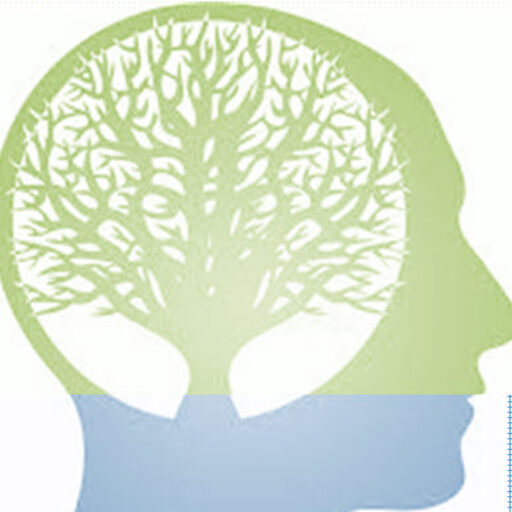Clinical Overview:
Ketamine (ketamine hydrocholoride), a Schedule III drug, is a dissociative anesthetic and analgesic used in both children and adults.
Ketamine is highly soluble in lipids and easily crosses the blood-brain barrier. Following intravenous administration, ketamine concentration has an initial phase, corresponding to its anesthetic effect, lasting about 45 minutes (with a serum half-life of 10 to 15 minutes). The anesthetic action ends through redistribution from the central nervous system to peripheral tissues and metabolic transformation to norketamine, which has about one-third the activity of ketamine. The elimination half-life of ketamine is about 2.5 hours.(1)
Ketamine’s Mechanism of Action
Ketamine operates by blocking the N-methyl-D-aspartate (NMDA) glutamate receptor Ca2+ channel to reduce the presynaptic release of glutamate; however, the exact mode of action is not known. Some researchers speculate that increasing free glutamate in turn stimulates postsynaptic α-amino-3-hydroxy-5-methyl-4-isoxazolepropionic acid (AMPA) receptors, which then mediate fast, excitatory neurotransmission. Ketamine’s antidepressant actions might instead be the result of AMPA stimulation rather than only an NMDA receptor blockade.
The rapid antidepressant effects of ketamine are associated with fast induction of synaptogenesis and the reversal of atrophy caused by chronic stress.(9) In other words, ketamine seems to actually rebuild synapses.
The effectiveness of ketamine in treating pain has been tied to its effects on the NMDA receptor, the AMPA receptors, as well as on the m-opioid receptors; however, some researchers have also pointed to the restoration of balance in the glutamate/ γ-Aminobutyric acid (GABA) system.
Ketamine and Depression
Growing evidence shows that ketamine produces remarkable antidepressant effects.(2,3) In 2000, Berman and colleagues(3) were the first to demonstrate the rapid onset of antidepressant effects with an NMDA receptor antagonist. In their placebo-controlled, proof-of-concept, crossover study of 7 patients, a subanesthetic dose (0.5 mg/kg) of ketamine administered through a 40-minute infusion yielded significant antidepressant effects within hours and lasted several days.
In a placebo-controlled, randomized crossover study by Zarate and colleagues in 2006,(2) 12 out of 17 participants (71%) showed a more than 50% reduction in depressive symptoms within 24 hours of receiving ketamine. These same participants showed almost no change in symptoms following a placebo saline injection. A 1-week follow-up confirmed a sustained response in approximately one-third of participants. An additional three placebo-controlled, crossover studies examining ketamine’s effects on major depressive episodes associated with both major depressive disorder (MDD) and bipolar disorder showed very similar results: rapid, robust antidepressant effects persisting for at least several days to weeks following a single subanesthetic ketamine dose. More recently, research has indicated that a series of infusions produces more pronounced and longer lasting benefits. There have been over 30 independent clinical trials on ketamine treatment in the United States alone. Their results consistently prove the efficacy of IV Ketamine Infusion Therapy with a 70% success rate or higher. We look forward to treating your patients, our patients, in the future. Contact us today.
References
- Pai A, Heining M. Ketamine. Continuing Education in Anaesthesia, Critical Care & Pain. April 1, 2007 2007;7(2):59-63.
- Zarate CA, Jr., Singh JB, Carlson PJ, et al. A randomized trial of an N-methyl-D-aspartate antagonist in treatment-resistant major depression. Archives of general psychiatry. Aug 2006;63(8):856-864.
- Berman RM, Cappiello A, Anand A, et al. Antidepressant effects of ketamine in depressed patients. Biological psychiatry. Feb 15 2000;47(4):351-354.
- Correll GE, Maleki J, Gracely EJ, Muir JJ, Harbut RE. Subanesthetic ketamine infusion therapy: a retrospective analysis of a novel therapeutic approach to complex regional pain syndrome. Pain Med. Sep 2004;5(3):263-275.
- Bredlau AL, Thakur R, Korones DN, Dworkin RH. Ketamine for Pain in Adults and Children with Cancer: A Systematic Review and Synthesis of the Literature. Pain Med. Aug 5 2013.
- Kosharskyy B, Almonte W, Shaparin N, Pappagallo M, Smith H. Intravenous infusions in chronic pain management. Pain physician. May-Jun 2013;16(3):231-249.
- Mathiesen O, Dahl B, Thomsen BA, et al. A comprehensive multimodal pain treatment reduces opioid consumption after multilevel spine surgery. European spine journal : official publication of the European Spine Society, the European Spinal Deformity Society, and the European Section of the Cervical Spine Research Society. Sep 2013;22(9):2089-2096.
- Persson J. Ketamine in pain management. CNS neuroscience & therapeutics. Jun 2013;19(6):396-402.
9.Li N, Lee B, Liu RJ, et al. mTOR-dependent synapse formation underlies the rapid antidepressant effects of NMDA antagonists. Science.Aug 20 2010;329(5994):959-964.
Other Resources For Ketamine Treatment
Ketamine Advocacy Network
Ketamine Advocacy Network FAQ’s
Research
Intranasal Drug Delivery in Neuropsychiatry: Focus on Intranasal Ketamine for Refractory Depression
The Pharmaceutical Journal: The Secret Life of Ketamine
Clinical Trials
Rapid Antidepressant Effects of Ketamine in Major Depression
Ketamine in the News
Onetime party drug hailed as miracle for treating severe depression
Ketamine found to have an “unbelievable” effect in treating severe depression
Evidence Mounting for Ketamine for Treatment-Resistant Depression
Club Drug Ketamine Gains Traction As A Treatment For Depression
Ketamine: The Future of Depression Treatment?
Special K, a Hallucinogen, Raises Hopes and Concerns as a Treatment for Depression
National Institute of Mental Health Director’s Blog: Ketamine
How ketamine is revolutionizing the way we treat depression
Could ketamine become the next great depression drug?
Club-Drug Ketamine Relieves Depression in Largest Patient Study
Once-popular party drug now used for severe depression
https://www.statnews.com/2016/04/26/ketamine-drugs-repurposing/
Ketamine Advocacy Network
Ketamine Advocacy Network FAQ’s
Research
Intranasal Drug Delivery in Neuropsychiatry: Focus on Intranasal Ketamine for Refractory Depression
The Pharmaceutical Journal: The Secret Life of Ketamine
Clinical Trials
Rapid Antidepressant Effects of Ketamine in Major Depression
Ketamine in the News
Onetime party drug hailed as miracle for treating severe depression
Ketamine found to have an “unbelievable” effect in treating severe depression
Evidence Mounting for Ketamine for Treatment-Resistant Depression
Club Drug Ketamine Gains Traction As A Treatment For Depression
Ketamine: The Future of Depression Treatment?
Special K, a Hallucinogen, Raises Hopes and Concerns as a Treatment for Depression
National Institute of Mental Health Director’s Blog: Ketamine
How ketamine is revolutionizing the way we treat depression
Could ketamine become the next great depression drug?
Club-Drug Ketamine Relieves Depression in Largest Patient Study
